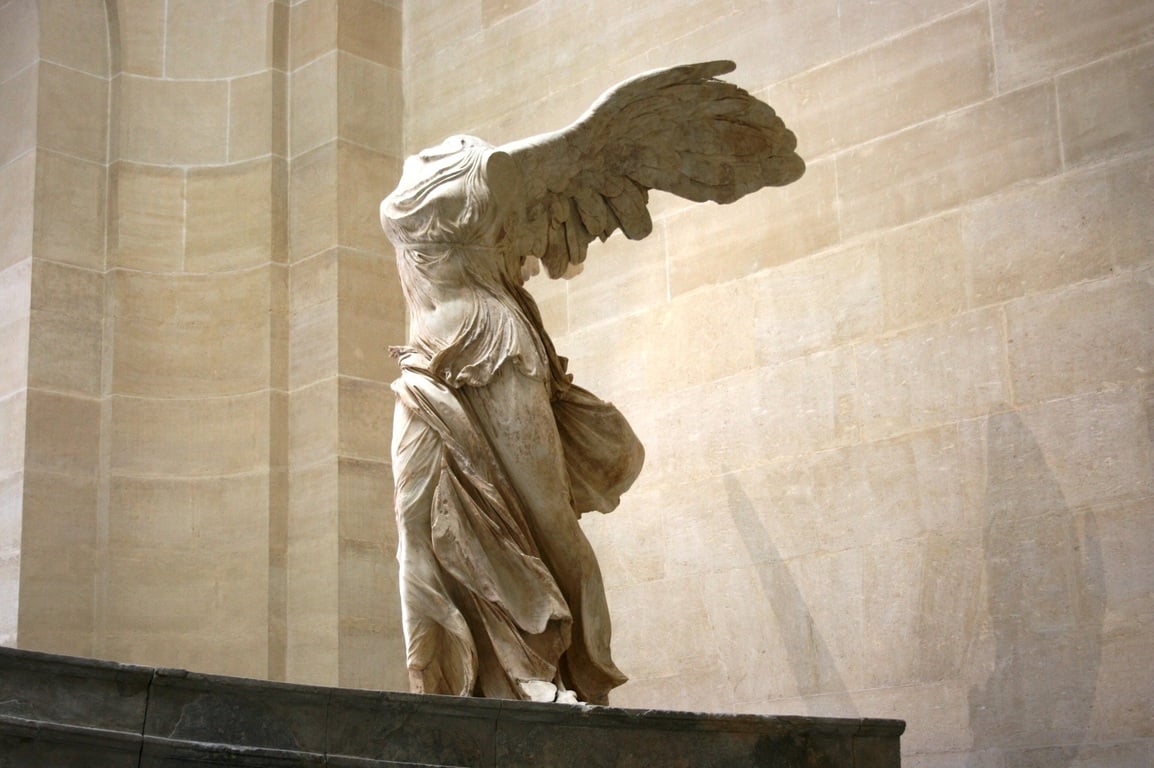
Numerous artistic treasures from or inspired by Greece are housed in Paris museums. Undoubtedly, the foundation of Western civilization is rooted in ancient Greece, and, whether architecture, philosophy, or other facets of human existence, the Hellenes (Greeks) were pioneers and showed the light to an entire continent in various ways.
“Greek architectural forms became implanted so deeply in the Roman architectural mindset that they endured throughout antiquity, only to then be re-discovered in the Renaissance and especially from the mid-eighteenth century onwards as a feature of the Neo-Classical movement,” mentions Dr. Jeffrey A. Becker.
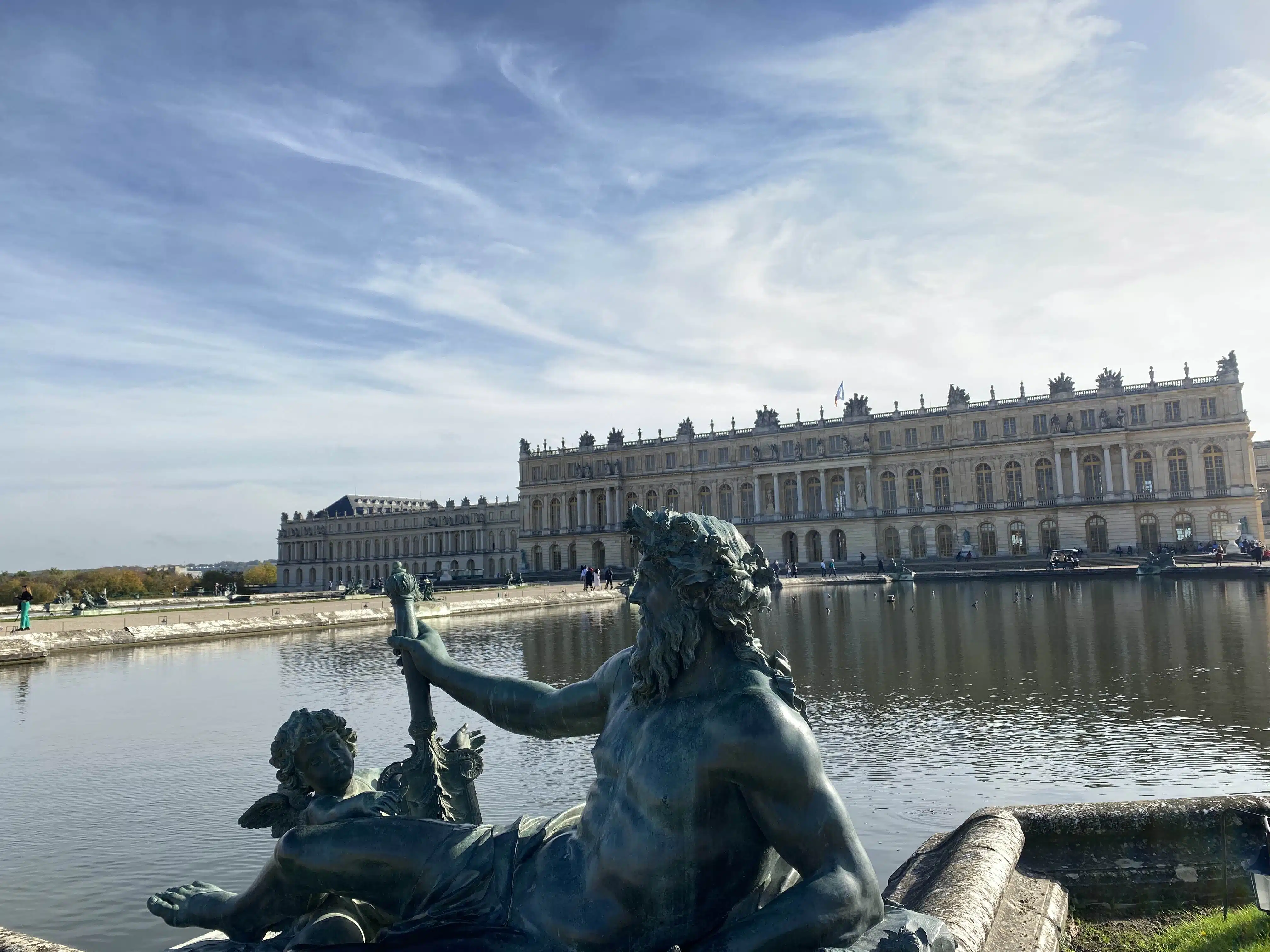
From the forms of various types of Greek buildings—including temples, stoas, theaters, bouleuterions, houses, stadiums, gymnasiums, palestras, fountain houses, fortifications, and altars—numerous builders throughout Europe drew inspiration. The Greek architectural orders of Doric, Ionic, and Corinthian have certainly left a substantially visible impact on the entirety of Europe.
As a result, these types of styles are also apparent in regions colonized by Europeans worldwide. These continue to be apparent even after the tyranny of colonialism, which obliterated unique styles of various lands through intrinsic discriminatory tendencies. Obviously, many colonizers appreciated the beauty of Greek architectural features and appropriated these in buildings in lands they conquered.
Greece and France
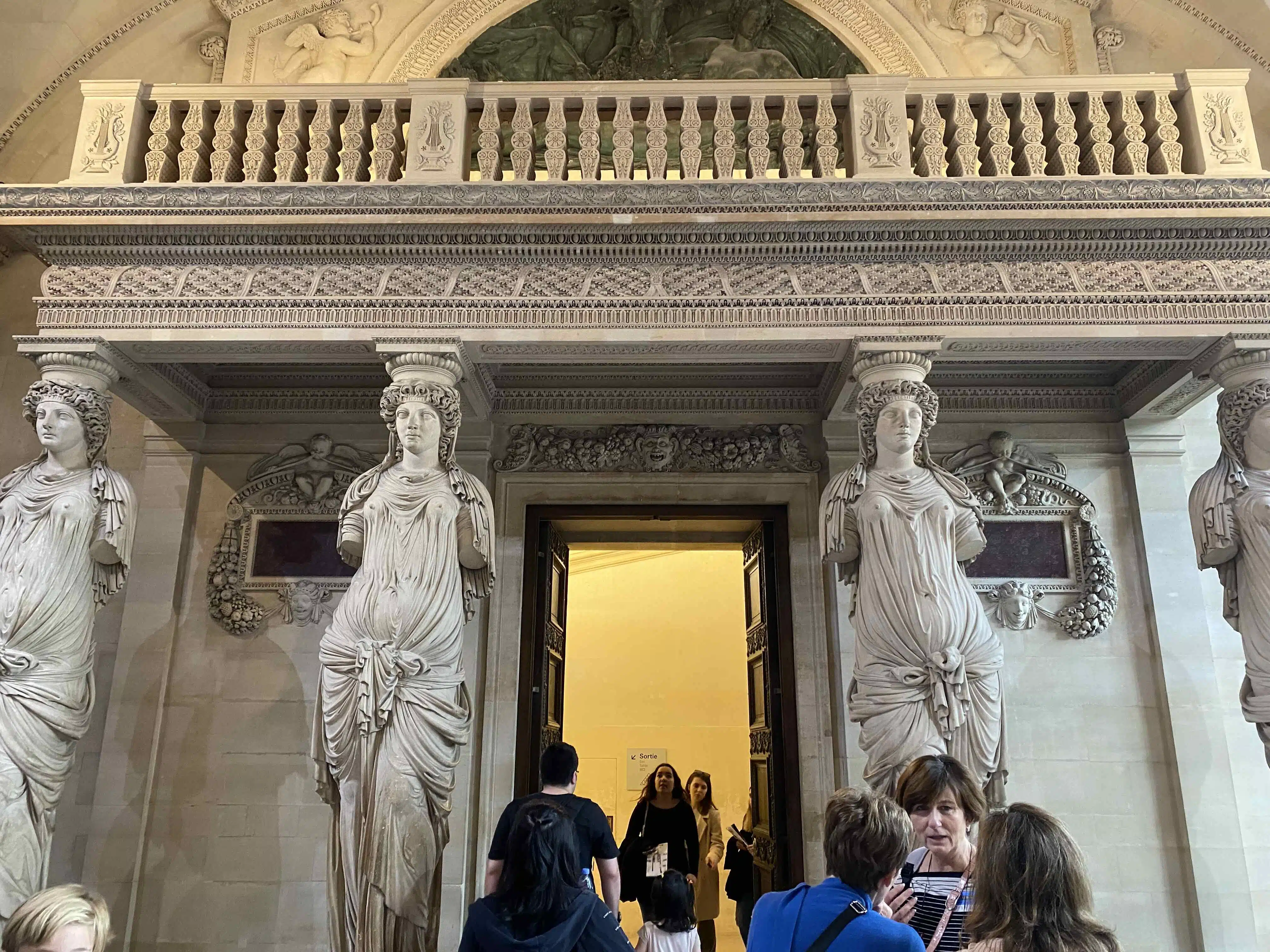
Greece gained independence from the Ottoman Empire after the Greek revolution which began in March 1821. In the same year, the Venus de Milo arrived at the Louvre in Paris. As per Christopher Gunstone’s book, The Greek Empire of Marseille: Discoverer of Britain, Saviour of Rome, Marseille (Massalia) in France was founded by Greeks in 600 B.C. These Greeks aimed to get silver from Spain. Due to the Persian invasion in 546 B.C., Greeks from Ionia began relocating to their western colonies and settlements in greater numbers.
Marseille led and founded several cities of its own in France, Spain, Monaco, and Corsica, which still exist and are known today as Nice, Monaco, Antibes, Le Brusc, Agde, Roses, Sant Marti d’Empuries, and Aleria. Rome was saved from extinction by Marseille when besieged by the Celts in 390 B.C. and played a crucial part in stopping Spanish supplies from reaching Hannibal, who was fighting the Romans in Italy.
It was indeed the Greek explorer Pytheas from present day Marseille in France who was the first Greek to have discovered Britain. He claimed to have explored a large part of Britain on foot. He also accurately estimated its circumference at four thousand miles (6,400 kilometers). In addition, Pytheas estimated the distance from northern Britain to Massalia (Marseille) at 1,050 miles (1,690 kilometers). The actual distance is 1,120 miles (1,800 kilometers).
Apollo at Versailles
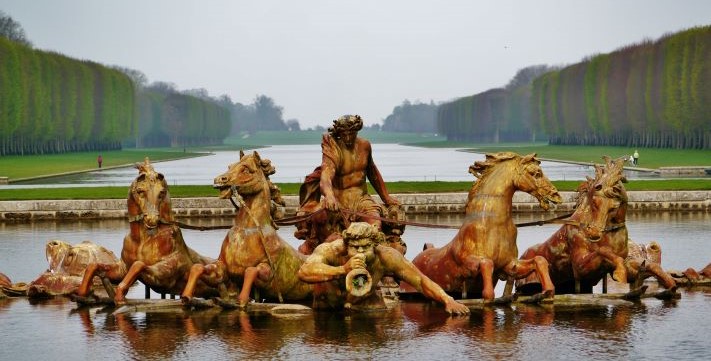
“L’Etat c’est a moi,” means “I am the state.” So said the absolutist monarch of France, Louis XIV. Louis became known as le Roi Soleil, the Sun King, furthering his claim of divine lineage by recalling the ancient Greek god Apollo and declaring himself in his usual modest manner to be the center of the universe.
A son of Zeus and the Titaness Leto, Apollo was part of the second generation of Olympians and one of the Twelve Olympians. Often depicted holding a lyre, he is the patron of music, poetry, medicine, and prophecy as well as the ideal of masculine beauty in Greek mythology. As god of the sun and certain critical aspects of Greek life, Apollo features in a number of significant myths.

Louis XIV, the king of France and Navarre, chose the sun as his emblem. The sun was associated with Apollo, god of peace and arts. In 1664, Joseph Werner painted the allegory of Louis XIV as Apollo on the Chariot of the Sun preceded by Aurora and accompanied by the Hours.
The Palace of Versailles is replete with representations and allegorical allusions to the sun god (laurel wreaths, lyres, tripods) combined with royal portraits and emblems. At a focal point between the formal gardens and groves that make up Le Petit Parc and the Grand Canal in the opulent grounds of the Palace of Versailles is the Bassin d’Apollon.
This large, artificial pool and fountain gets its name from the Greek sun god, Apollo, who is depicted riding a horse-drawn chariot in the pool’s elaborate centerpiece. The author observed the manner in which Apollo the Greek god has been used as a motif in the entire state of Versailles—from paintings on ceilings to various sculptures and the Apollo fountain.
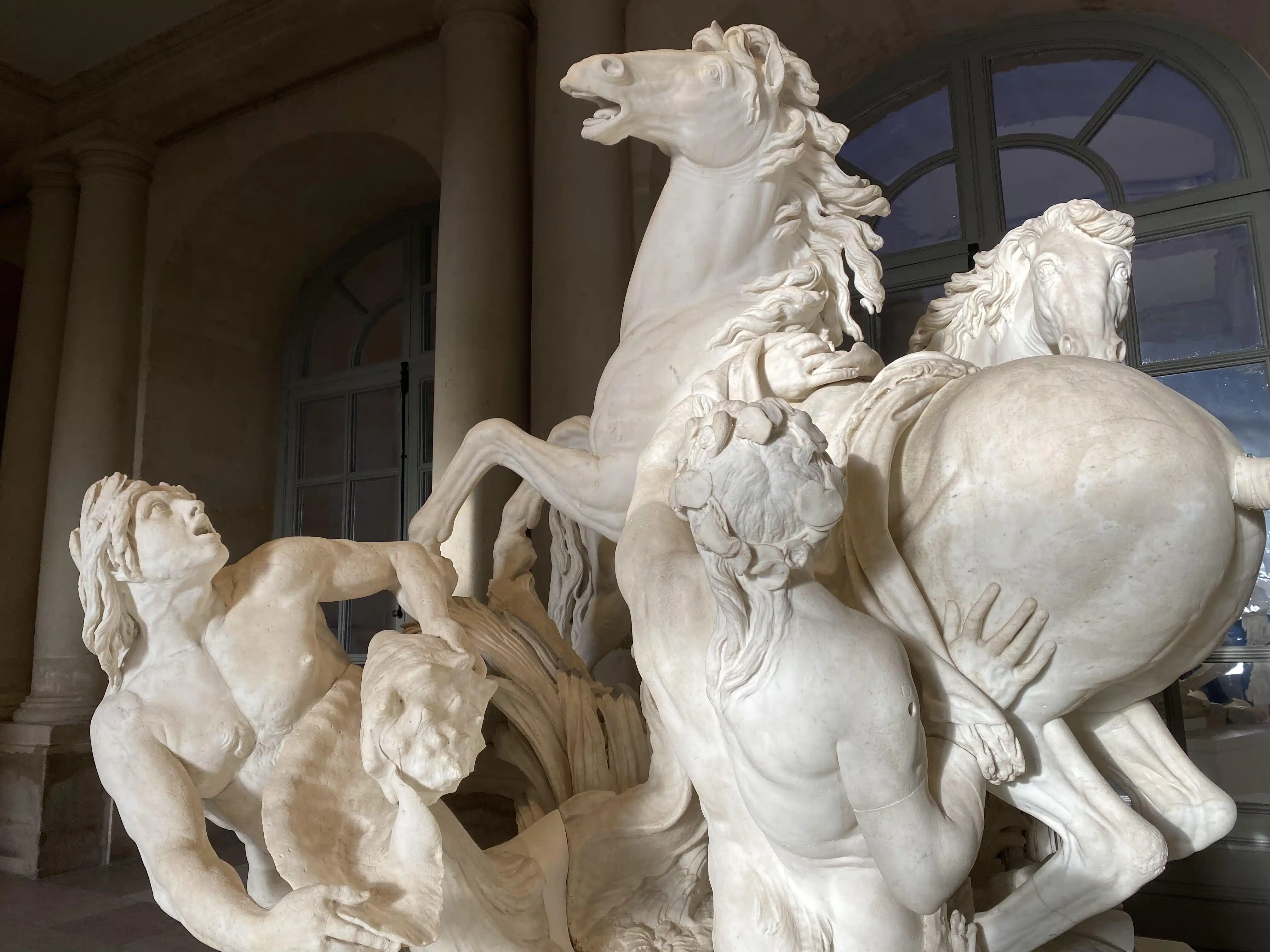
Alexander the Great at Versailles
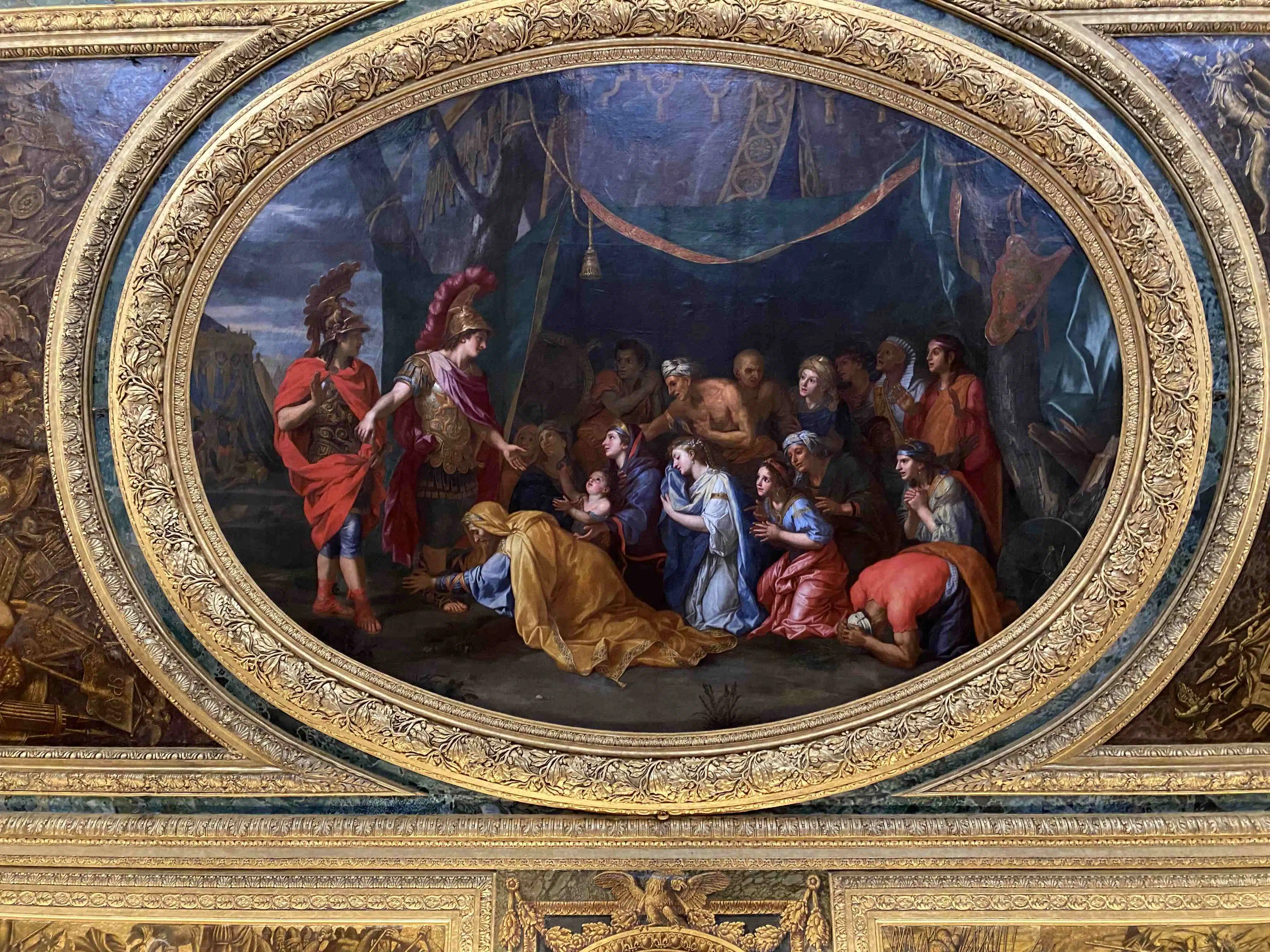
It was in the year 1661 the artist Le Brun received his first commission from the “Sun King,” Louis XIV, for the painting of The Family of Darius Before Alexander (or The Tent of Darius) in which the qualities of the artist’s mature style appear fully developed. The hero happens to be Alexander the Great with whom King Louis XIV was somewhat familiar.
Alexander the Great (356 BC-323 BC) was the military genius who created an empire that stretched across three continents and reached all the way to the northwestern border of India. He was the theme of the next series of work commissioned by King Louis XIV from Le Brun immediately after the Tent of Darius.
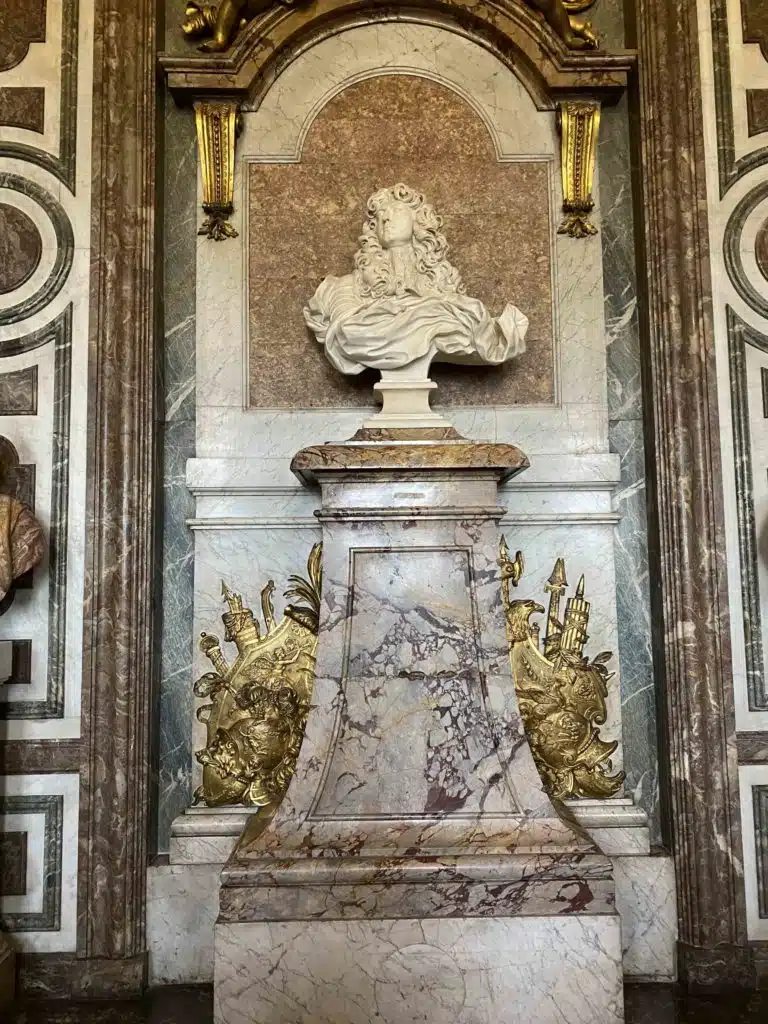
Louis XIV commissioned four huge canvases illustrating the victories of Alexander. These works—executed between 1665 and 1673—were intended as cartoons for tapestries, which were later woven at the Gobelins Manufactory in Paris. The series consists of Alexander Entering Babylon (or The Triumph of Alexander); The Battle of Arbela; Crossing the Granicus; and Alexander and Porus. An allusion to the grandeur of the reign of Louis XIV, who was also a great conqueror and powerful monarch, is evident in the paintings. The four works, later reproduced as tapestries, were part of the collections of Louis XIV.
The Treasure of Greek Arts at the Louvre Museum
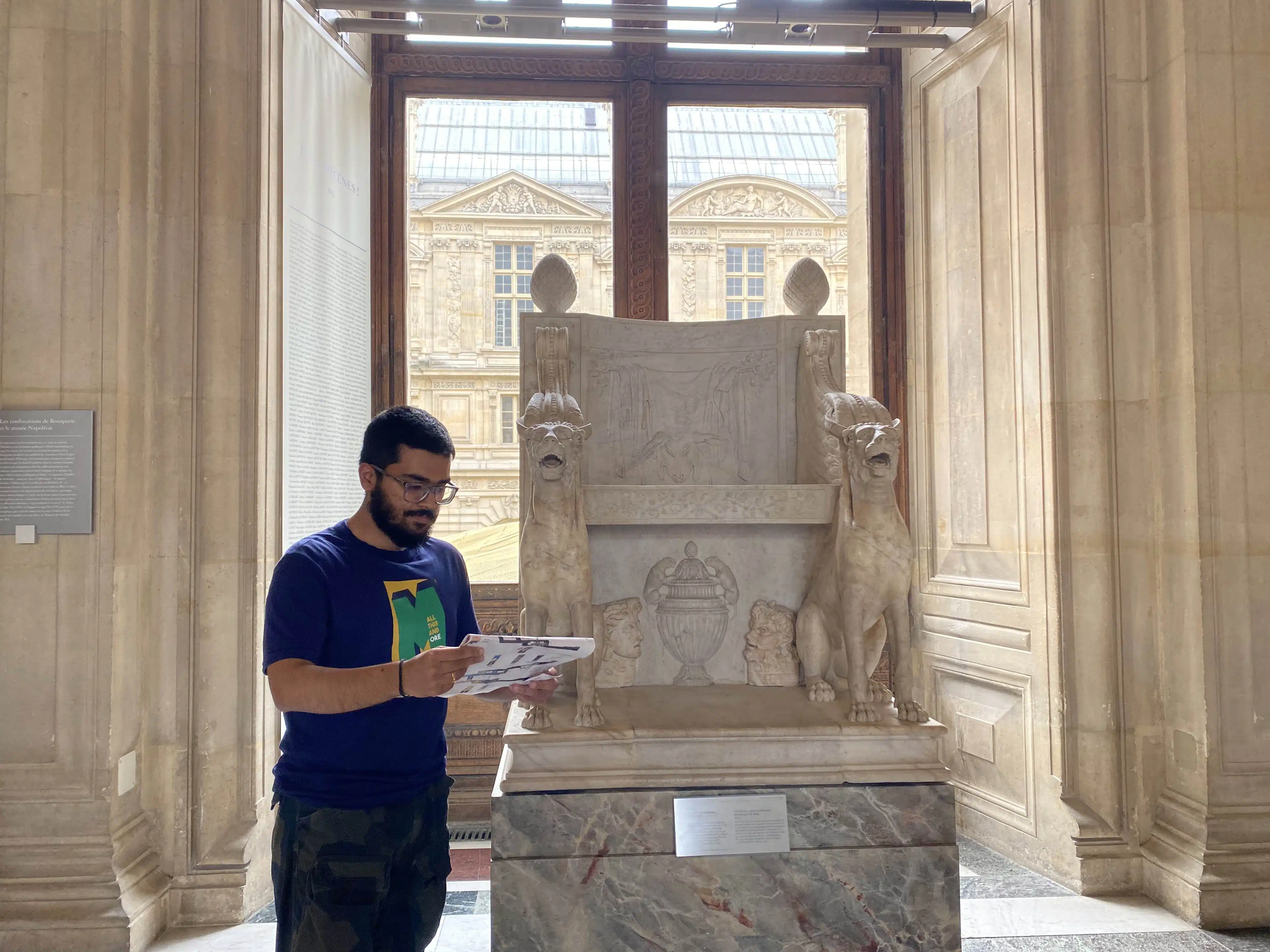
The Louvre Museum in Paris is a treasure trove of international antiquities, and, while there was opportunity to explore it all—especially the Greek section—there is such a vast array of sculptures and statues of Greek gods and goddesses under one roof there that there is a paucity of space in this article. Mentioning all of these here is therefore impractical. Nevertheless, there are certain art pieces indicated below that do warrant some mention.
The Winged Victory, or Nike of Samothrace

During the Ottoman era, Charles Champoiseau served as vice-consul in Adrianople (Greek: Ανδριανούπολη) —modern Edirne in Turkey—and visited Samothrace specifically to look for antiquities. The statue was brought to France by Charles Champoiseau, who found it in pieces during excavations on the island of Samothrace in 1863. The statue, made of white marble from the Greek island of Paros—one of the finest marbles of Greece—represents the goddess of Victory about to alight on a ship whose sailors have just won a sea battle.
Nike of Samothrace probably dates to 190 BC and was commissioned to celebrate the formerly mentioned victory in a battle at sea. The winners, perhaps the inhabitants of the island of Rhodes, erected it on Samothrace to thank the great gods of the island, the Cabeiri, who were worshipped throughout the Greek world.
It is said that the parents of Alexander the Great, Philip II of Macedon and Olympias of Epirus, first met each other as initiates on Samothrace (Plut. Alex. 2.1). During the Hellenistic period, the Sanctuary of the Great Gods underwent intensive renovations when the successors of Alexander the Great (356-323 BCE) attempted to surpass each other in generosity and became committed to beautifying and enlarging the temple complex.
Aphrodite of Milos, or Venus de Milo

Carved of marble by Alexandros, a sculptor of Antioch on the Meander River around the year 150 BCE, the Aphrodite of Milos—also known as Venus de Milo—statue was found in pieces on the Aegean island of Milos on April 8, 1820. Olivier Voutier, an ensign in the French navy, whose warship had been idling in port, was searching for Greek antiquities when a local farmer working nearby uncovered the statue while removing stones from a niche in an ancient wall.
The statue would go to Constantinople, but, according to Marquis de Rivière, the French ambassador to the Ottomans, it belonged in Paris. The local officials on Milos, who had been fined by the Turks for not holding on to the statue, were reimbursed by Rivière and, they, in turn, signed a quittance. It is this agreement that has made negotiations for the repatriation of the Venus de Milo impossible. The statue was subsequently presented to Louis XVIII, who then donated it to the Louvre in 1821.
The Athena of Velletri, or Diana of Versailles
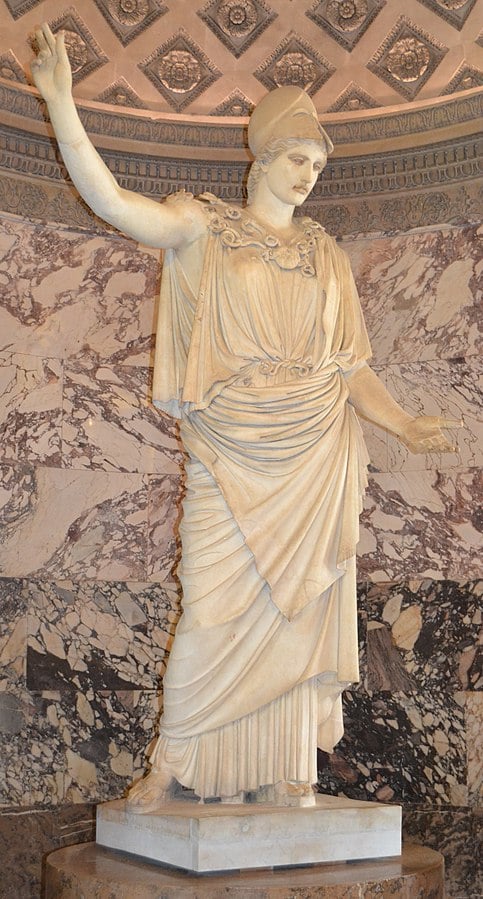
The Athena of Velletri at the Louvre is the only version of this type of sculpture that has been so well-preserved. It was a Roman replica of the Greek bronze original created in 430 BC by Kresilas, the author of the iconic portrait of Pericles. The marble used for this statue is of the dolomitic type, which was extracted from Mount Hymettus, located southeast of Athens. It usually marked by a slight greyish streaking. The statue of Artemis (Diana in Latin) of Versailles at the Louvre is a partially restored Roman copy of a lost Greek bronze originally attributed to Leochares.
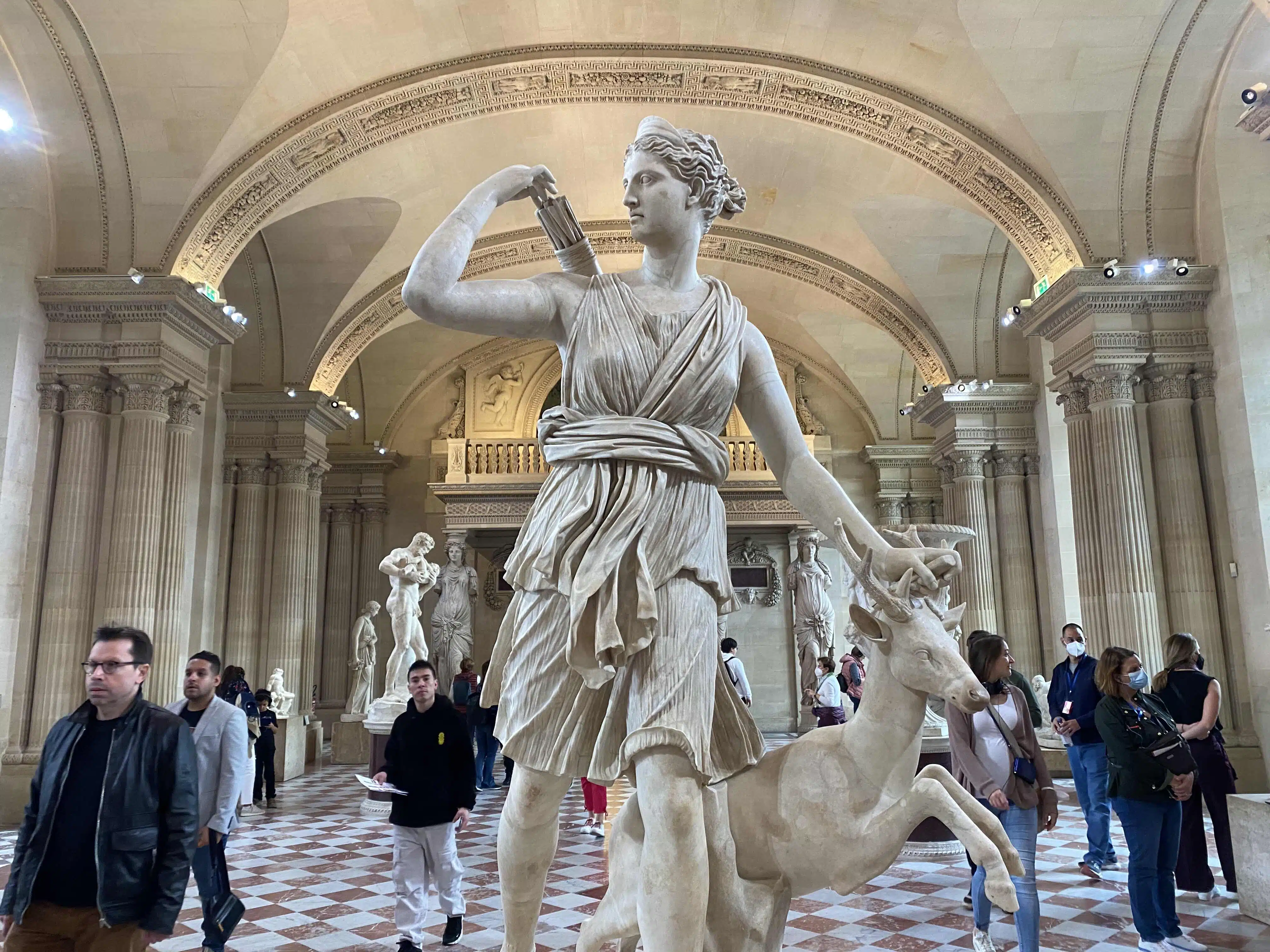
The original marble of Artemis of Velletri was discovered in Italy at either the Temple of Diana Nemorensis or at Hadrian’s Villa in Tivoli and presented as a gift from Pope Paul IV to Henry II of France in 1556. One of the first antique sculptures to be seen in France, it was mounted prominently in the Jardin de la Reine at the Palace of Fontainebleau.
In 1602, it was transferred to a specially-designed gallery, the Salle des Antiques, in the Palais du Louvre in Paris and restored by the sculptor Barthélemy Prieur (1536-1611), who produced a replica cast in bronze for Fontainebleau.
The Massacre at Chios, by Eugene Delacroix
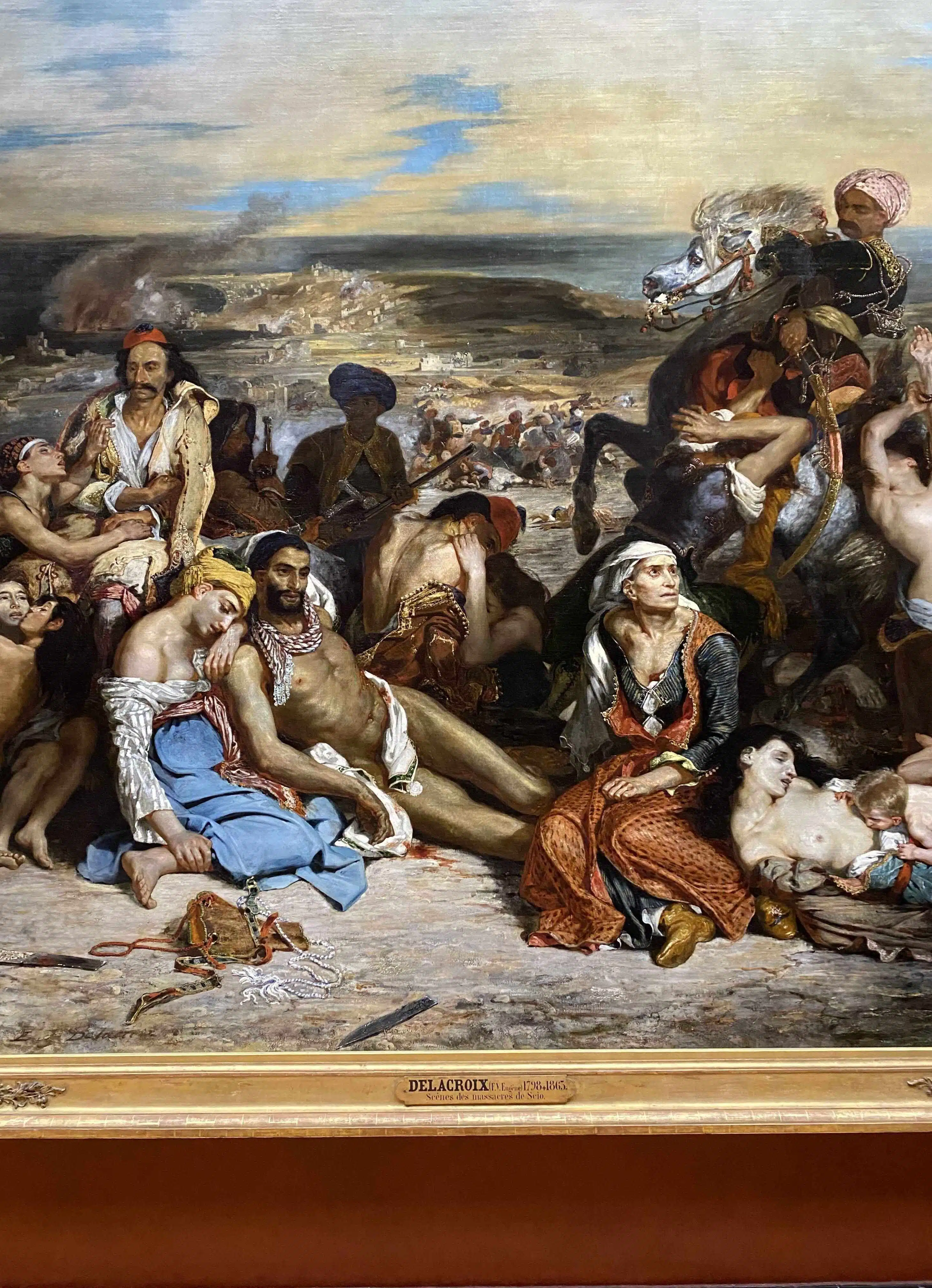
Eugene Delacroix said to his friend, Raymond Soulier: “I plan to do for the next Salon a picture for which I will take the subject from the recent wars between the Turks and Greeks. I believe that, [under] the present circumstances, if there is any quality in the execution of the work, it will be a way to distinguish myself.”
The Chios massacre was the killing of tens of thousands of Greeks on the island of Chios by Ottoman troops during the Greek War of Independence in 1822. It is considered the worst atrocity committed by the Ottomans against Greeks during the Greek War of Independence. Greeks from neighboring islands had arrived on Chios and encouraged the Chians to join their revolt. In response, Ottoman troops landed on the island and killed thousands. Approximately three-quarters of the population of 120,000 were killed, enslaved, or died of disease. The massacre of Greek Christians provoked international outrage and led to increasing support for the Greek cause worldwide.
Entry of the Crusaders in Constantinople, by Eugene Delacroix
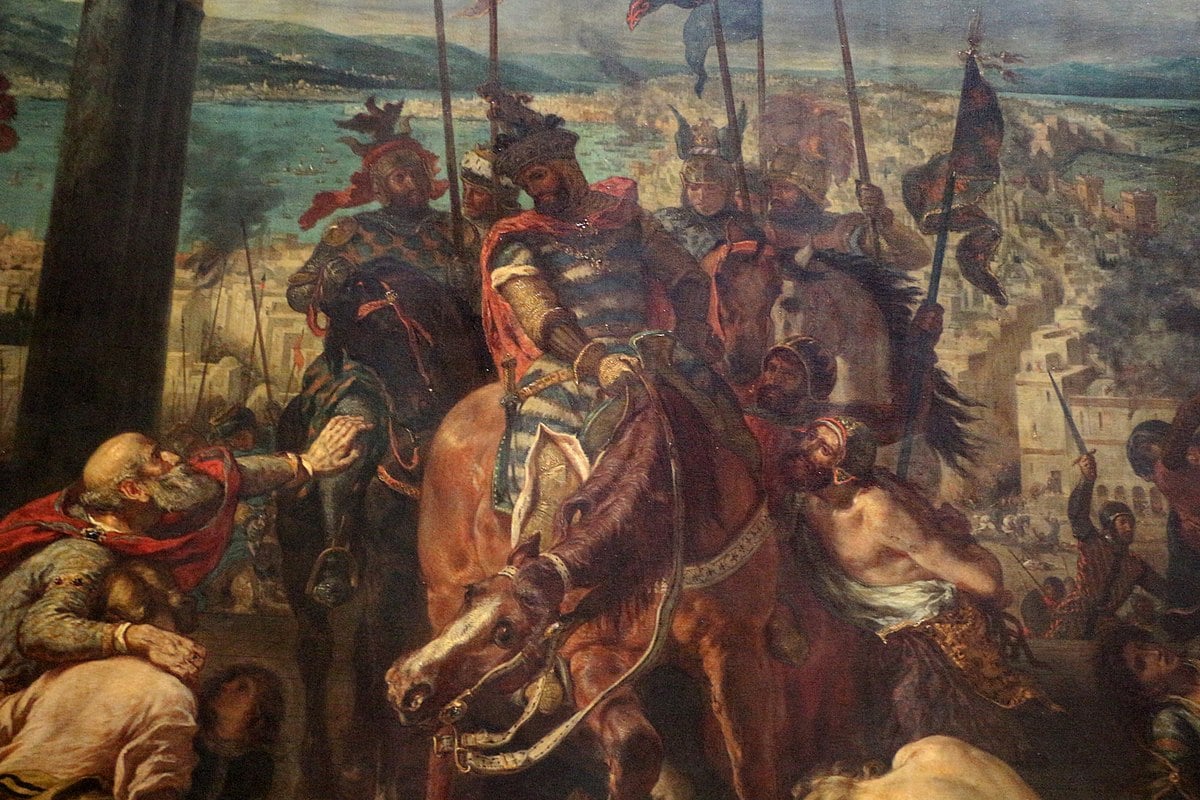
The Entry of the Crusaders in Constantinople illustrates an event of the Fourth Crusade (1202-1204), called for by Pope Innocent III. The Latin Crusaders had turned away from their original goal, the reconquest of the Holy Land and, especially, of Jerusalem, which had been occupied by the Muslims since 1187.
The Latin Crusaders, under the leadership of Count Baldwin of Flanders and the Doge of Venice, Dandolo, seized Constantinople at the command of Emperor Isaac II Angelus, who had been dethroned but subsequently restored to power in July 1203. A revolt forced them to lay siege to the city a second time, and they sacked it on April 12, 1204. The territory was divided among Crusade leaders with Baldwin placed at the head of the ephemeral Latin Empire that lasted until 1261.
Why Are So Many Greek Art Pieces Still Not in Greece?
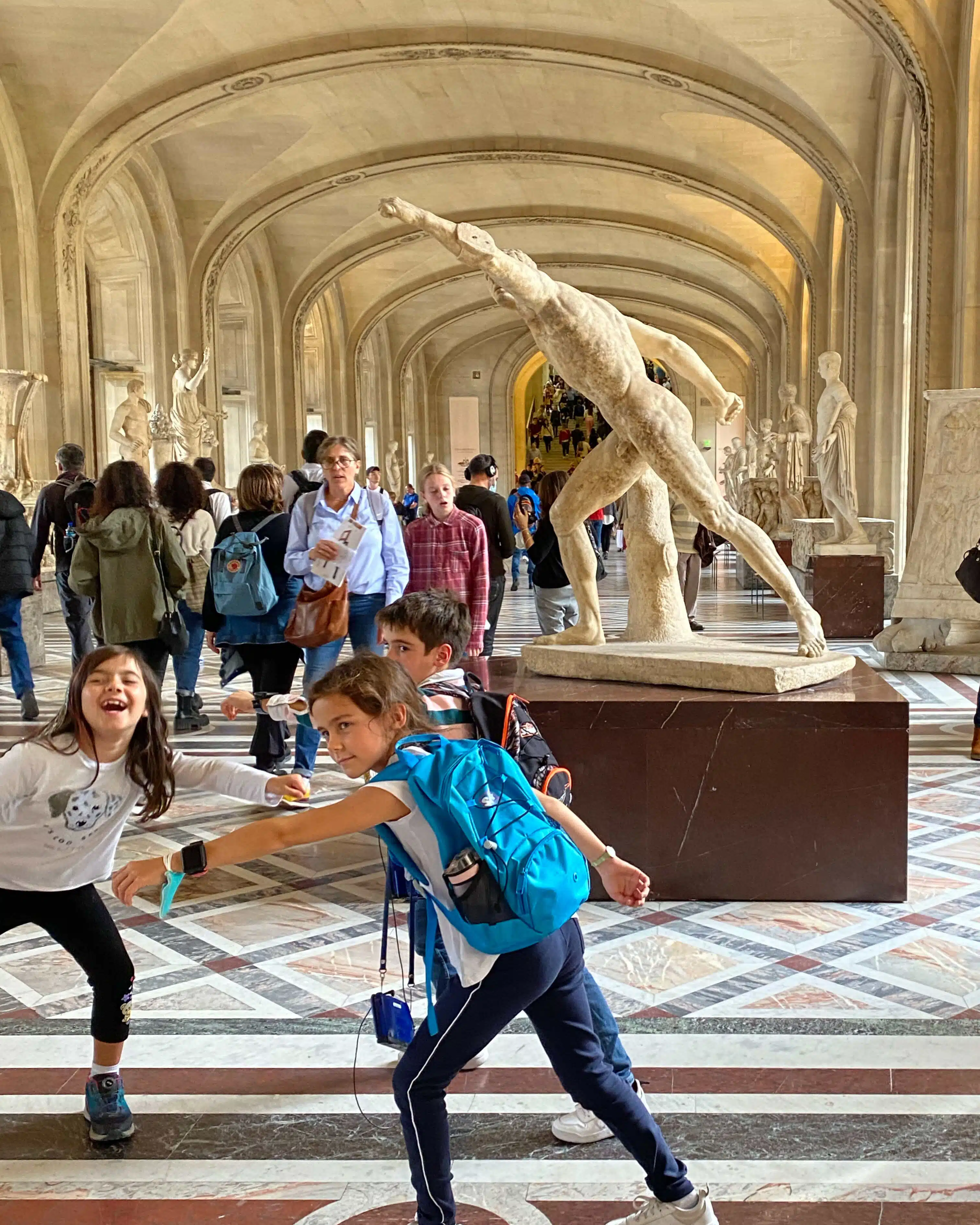
The question as to why so many Greek art pieces remain outside of their country of origin is one for the government of Greece, for it is the Greek government which can devise an appropriate mechanism for repatriating Greek art pieces to Greece. For instance, India has recently been on a mission to repatriate Indian antiquities removed by colonialists from India through diplomatic routes.
Alternatively, the government could collaborate with foreign governments. Greeks and Philhellenes might, for instance, be allowed better access to travel to destinations in order to study Greek art pieces affordably and conveniently.

The most optimal environment in which an art piece can be appreciated is in the cultural milieu of its origin. This also provides a plausible reason for people to travel and explore artistic treasures in museums. In a way, this more evenly re-distributes tourists around the globe rather than forcing them to stand in lines outside a mere handful of prominent museums in Western Europe.
See all the latest news from Greece and the world at Greekreporter.com. Contact our newsroom to report an update or send your story, photos and videos. Follow GR on Google News and subscribe here to our daily email!



